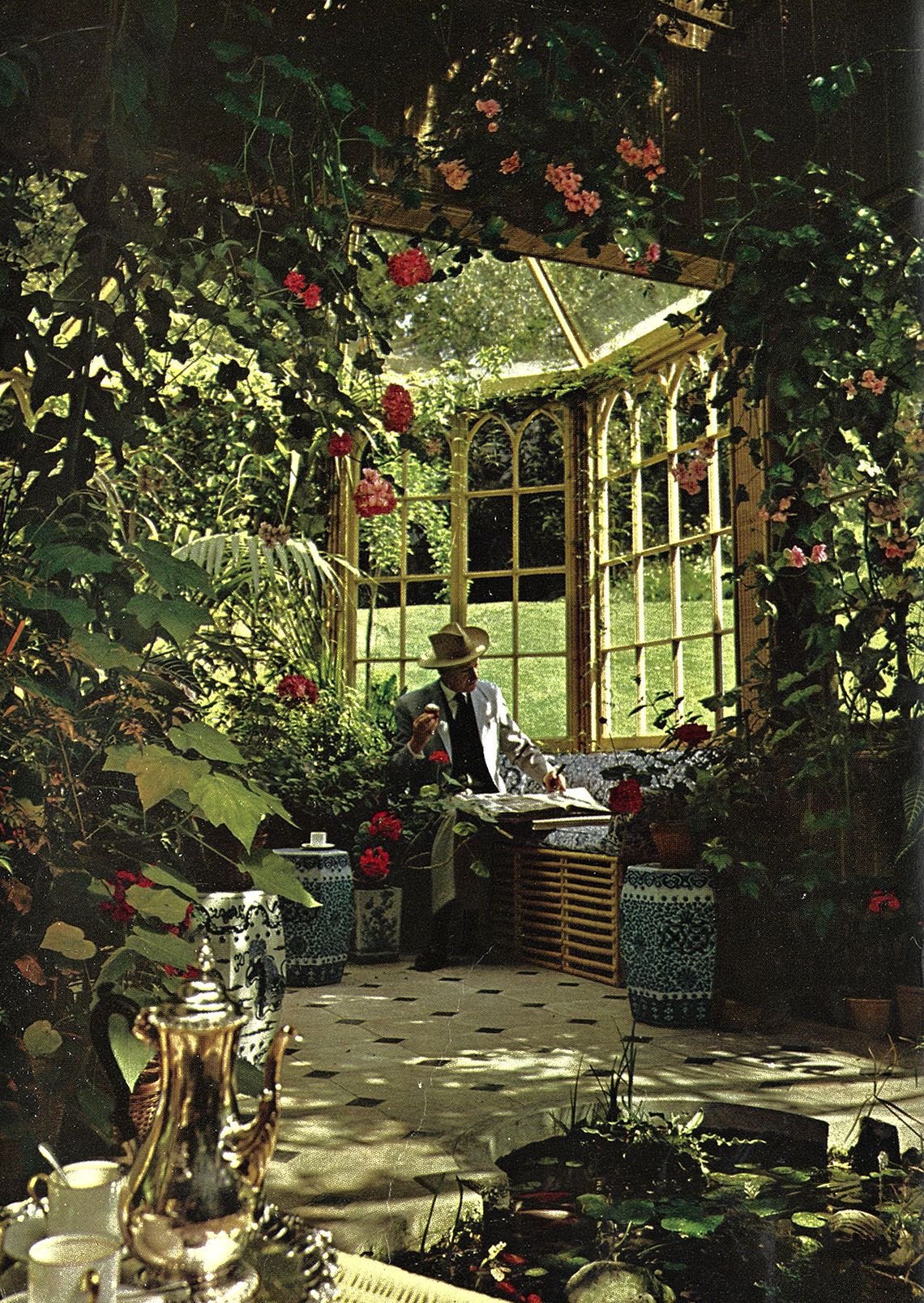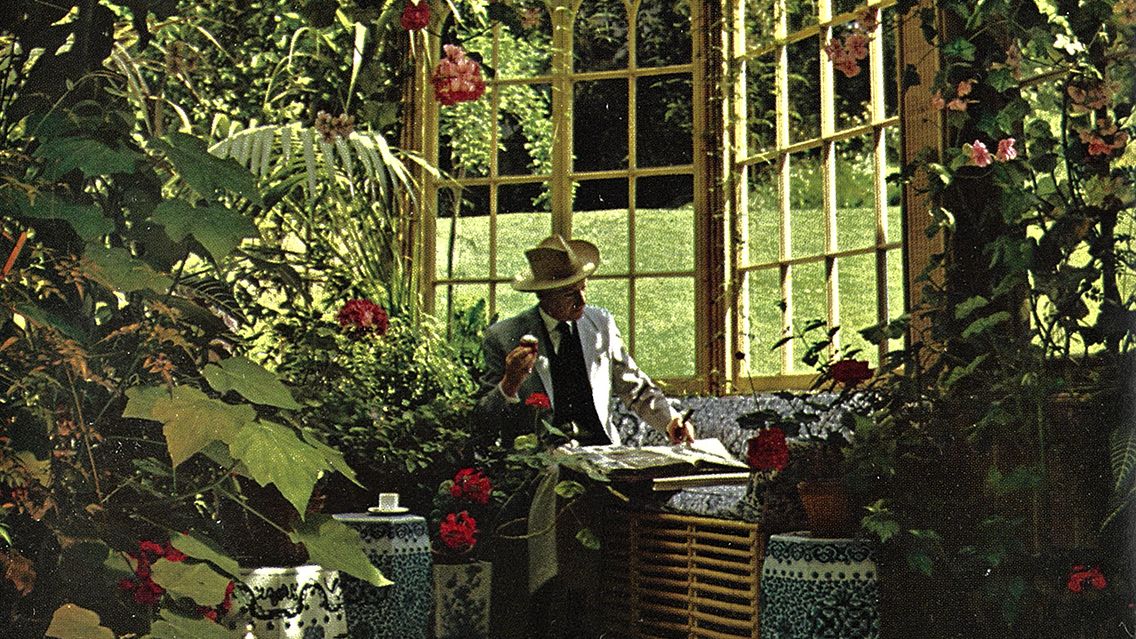
Cecil Beaton’s magnificent mise-en-scènes extended across photography, film – and into interiors. At Ashcombe, his pre-war house in Wiltshire, he slept in a red and gold carousel-inspired four-poster bed designed by Rex Whistler, surrounded by murals featuring circus figures in trompe l’oeil niches by himself, Rex, Lord Berners (on whom Nancy Mitford based her character of Lord Merlin) and other artists. His Syrie Maugham-influenced studio-cum-sitting room had curtains made from hessian sacking studded with 300,000 pearl buttons, and the bathroom was covered with ink outlines of guests’ hands, so Cecil could lie in the bath and ‘compare Siegfried Sassoon’s thumb with Sacheverell Sitwell’s.’ But, interior design is ‘the most fugitive and fragile of art forms,’ noted historian Steven Brindle, and none of it exists now. The house suffered bomb damage during World War Two, the ceiling of the famed Circus Room fell in – and, in 1945, Cecil was forced to give up the lease altogether.

‘Best Invitation of the Season’ Nina De Voe in Ballgown by Balmain, 1951, by Cecil Beaton. Photograph by Cecil Beaton. Courtesy of Condé Nast Archive
Fortunately, other strands of Cecil’s extraordinary creativity have fared significantly better. And this autumn we’re being offered opportunity to explore his ingenious world via a glorious exhibition at the National Portrait Gallery. Curated by Robin Muir, a long-time contributor to House & Garden’s sister magazine, Vogue, it demonstrates how Cecil elevated fashion and portrait photography into an artform, while developing a new aesthetic that combined wit and sparkling frivolity with beauty and elegance in a manner that always seemed fresh. It also looks at the studied artifice on which the triumphs were built: ‘I don’t want people to know me as I really am, but as I’m trying and pretending to be,’ Cecil said, while still a child. ‘What Cecil wore, what he possessed, what friends he treasured, what he was surrounded by – all were paramount to his sense of self,’ explains Robin. And this included the aforementioned interiors: ‘His homes, whether owned or rented or the many hotel suites he was given carte blanche to transform into that inimitable Beaton-esque style, these became extensions of his persona, reflections of a carefully curated self-image.’ Occasionally, these spaces even provided backdrops. Hence, between superbly ethereal images of high-society, royals, and Hollywood stars, we are afforded occasional glimpses of lost rooms that, as they evolved, mirrored Cecil’s professional progress. And, with words, we can expand the view.
